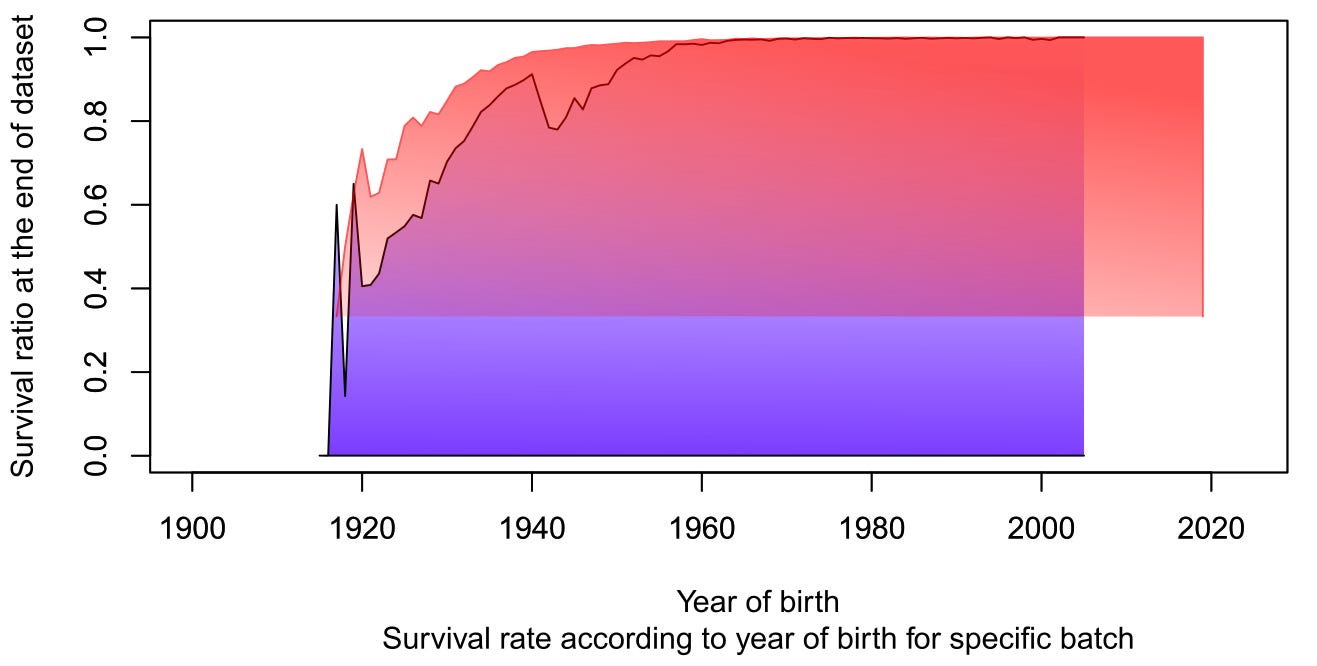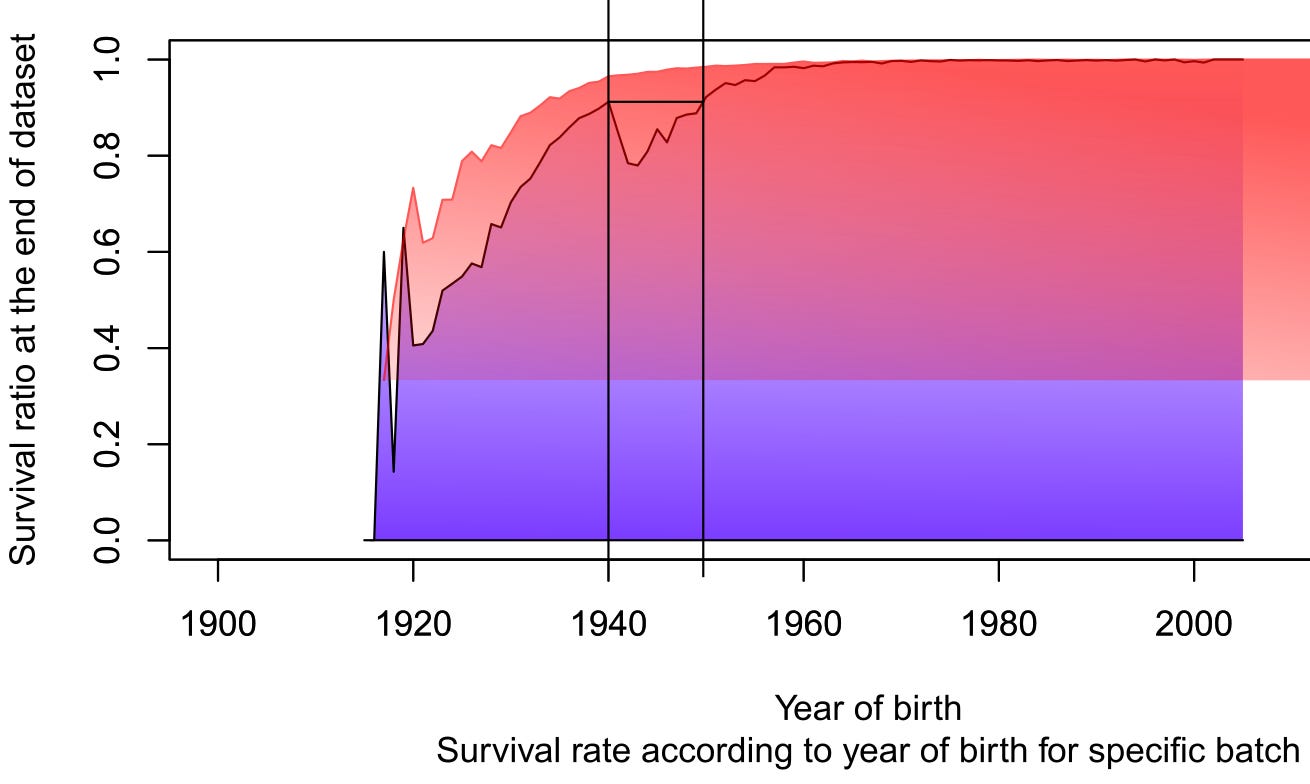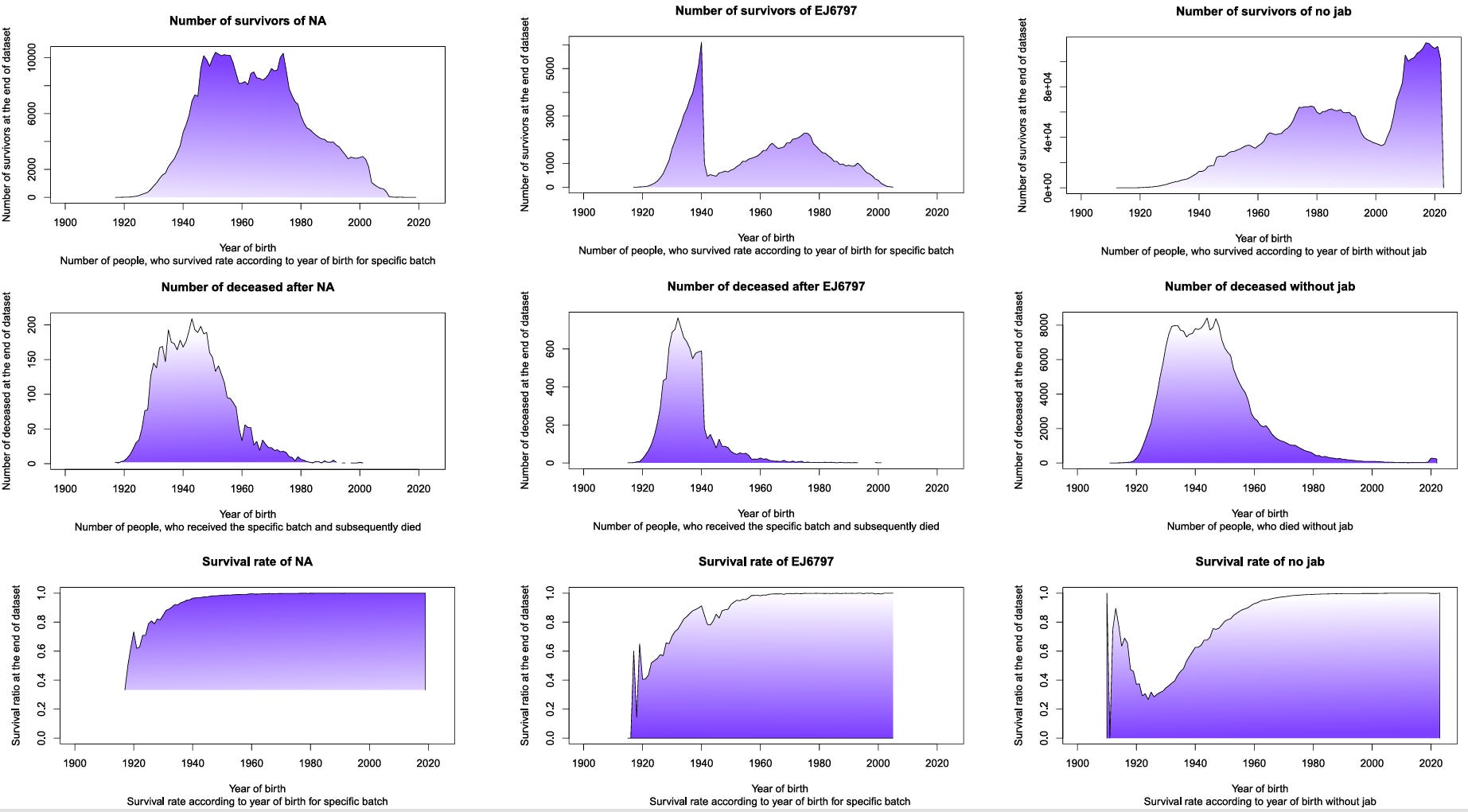Smoking syringes: Specific age group mortality by specific batches in Czech dataset
What is the survival ratio of a specific batch based on age?
Graphic abstract of three very common scenarios - unknown jab, batch EJ6797 and no jab
Since we have enough batch specific data, we can plot survival ratio over whole dataset based on batch and age, the graphs speak for themselves. If a person was born in a specific year and got a specific shot, what are the chances to survive?
As a rule, younger people should have higher chance to survive then the older ones, unless there is very small group in specific age, who received the specific jab.
Please note that the group without jab includes people, who were especially fragile and could not get the jab due to their fragility. This includes children who survived barely few weeks after birth because of the conditions they were born with.
As noted above - the chances of survival should have been rising as people get younger, but for many batches this is not the case.

There is a significant gap between those, who have received an unknown jab and EJ6797 participants. Receivers of unknown jabs had to survive to get them, therefore unknown jabs aggregate lucky scenarios. Many of those are methodologically immortal for significant portion of time described in the dataset. But we may be surprised how this group has evolved based on vendor and time when the jab was received.
There is one more interesting thing happening: There is a peculiar drop in survival ratio of EJ6797 as people get younger! Those, who have received EJ6797 and were born in 1940 have similar chance of survival as receivers of EJ6797 born in 1949, but those who received EJ6797 and were born in years 1941 to 1948 have lower chance of survival then those born in 1940.

But it gets worse.
There are some unlucky batches, whose young receivers were dying more than we would expect four years ago.
Survival rate of ET1831 and ET3620 remains bumpy even for people in their twenties.
These deaths of young adults should have been properly investigated, since it takes a lot to kill a young person, instead, none of these deaths has been attributed to the specific batch by the Czech or EU authorities and not even one case was taken seriously, which contributes to the lack of trust to medical establishment in the Czech republic.
EW4815
EP3163
Of course this, for the time being, dismissed as individual, unfortunate cases.
Shall we investigate every accident after vaccination as a possible vaccine injury? If we look at the conditions, that are officially attributed to the vaccines (even to the regular ones) they may prevent people from making vital decisions - in traffic, at work or at home. Sudden rise in body temperature, sudden drop in blood sugar or even generally feeling unwell may contribute to accidents of vaccinated people.
Many of those, who have received those jabs, did subsequently face life threatening conditions, that can hardly be described as accidents.
And these are people in their twenties. They are expected to be the future. The outrage over their deaths and disabilities is long overdue.






